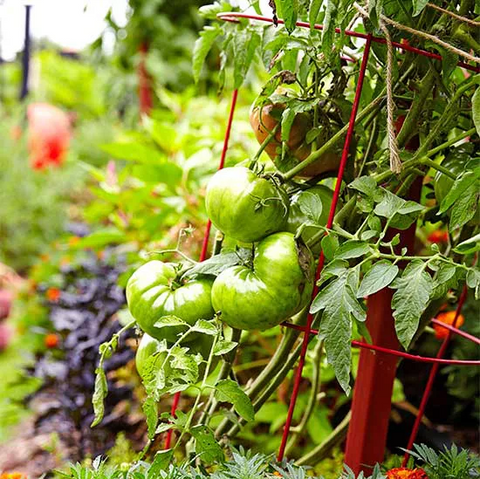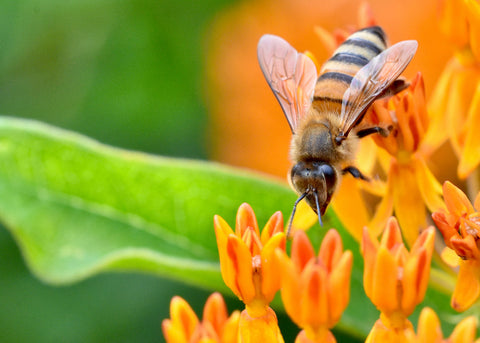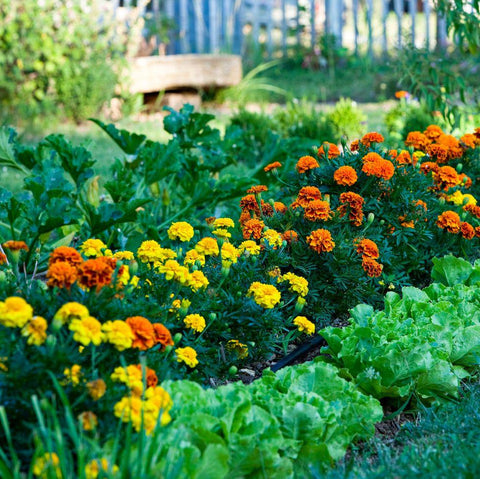Berry Gardening: It's a delightful, fruitful hobby that brings not only delicious rewards but also the sheer joy of growing your own berries. Whether you have a spacious backyard or just a small balcony, berry gardening can be tailored to fit your space. In this comprehensive guide, we'll explore the wonderful world of berry gardening, including the types of berries you can grow, tips for a successful harvest, and the health benefits that come with these delectable fruits.The following content also has some reference value for raised garden beds.
Why Berry Gardening?

Before we dive into the specifics, let's take a moment to understand why berry gardening is such a rewarding endeavor:
Fresh, Flavorful Berries
Homegrown berries taste incredibly fresh and flavorful, often surpassing store-bought options in both taste and quality.
Health Benefits
Berries are packed with antioxidants, vitamins, and fiber, making them a nutritious addition to your diet. They may help improve your overall health and even reduce the risk of chronic diseases.
Cost-Efficient
Growing your own berries can save you money in the long run, especially if you enjoy eating berries regularly.
Connection to Nature
Gardening offers a sense of fulfillment and connection to the natural world. Watching your berry plants grow and flourish can be incredibly satisfying.
Gardening for All
Berry gardening is accessible to gardeners of all skill levels and space constraints. Whether you have a large garden or just a windowsill, you can cultivate berries.
Choosing the Right Berries
The world of berries is vast and varied. Here are some popular types to consider growing in your garden:
1. Strawberries
Strawberries are a garden favorite. They're relatively easy to grow and produce sweet, juicy fruits. You can plant them in the ground, containers, or even hanging baskets.
2. Blueberries
Blueberries are known for their antioxidant-rich berries. They thrive in acidic soil and can be grown in pots or garden beds. They also display stunning fall foliage.
3. Raspberries
Raspberries come in red, black, and yellow varieties. They're perfect for making jams, pies, or simply enjoying fresh. Raspberries can be grown in rows or as individual plants.
4. Blackberries
Blackberries are another bramble fruit. They can be thorny or thornless, and they produce sweet, dark berries. Grow them on trellises or in containers.
5. Cranberries
Cranberries are famous for their use in sauces and juices. They're well-suited to boggy conditions, but you can also grow them in containers with acidic soil.
6. Gooseberries
Gooseberries are tart berries often used in cooking and baking. They grow well in cooler climates and can be trained into beautiful hedges.

7. Currants
Currants come in red, white, and black varieties. They're versatile and can be used in various culinary creations. Currant bushes are hardy and easy to care for.
8. Elderberries
Elderberries are known for their immune-boosting properties. They grow well in a wide range of climates and make excellent additions to jams and syrups.
Tips for Successful Berry Gardening
Now that you've chosen your berry varieties, here are some tips to ensure a successful berry garden:
1. Choose the Right Location
Most berries prefer full sun, but some, like raspberries and currants, can tolerate partial shade. Ensure well-draining soil with good air circulation.
2. Soil Preparation
Check the pH of your soil and make any necessary amendments. Most berries prefer slightly acidic soil. Add organic matter like compost for nutrient-rich soil.
3. Pruning
Proper pruning is essential for berry plants. It helps with airflow, reduces disease risk, and promotes vigorous growth. Research pruning requirements for each berry type.
4. Mulching
Mulch helps retain soil moisture, suppress weeds, and maintain an even soil temperature. Use organic mulch like straw, wood chips, or pine needles.
5. Fertilization
Berries benefit from regular feeding. Apply a balanced, slow-release fertilizer in the spring and, if necessary, a foliar fertilizer during the growing season.
6. Pest and Disease Management
Monitor your berry plants for signs of pests or diseases. Implement organic pest control methods and promptly remove diseased or infested plant parts.
7. Watering
Consistent, deep watering is crucial, especially during dry spells. Avoid overhead watering to lower the risk of fungal diseases.
8. Harvesting
Harvest berries when they're ripe. This varies by berry type, so familiarize yourself with the specific harvest times for each variety.
Health Benefits of Berries

Beyond their delicious taste, berries offer a plethora of health benefits:
Antioxidant Power
Berries are rich in antioxidants, which help combat oxidative stress and reduce the risk of chronic diseases.
Nutrient-Rich
They're packed with essential vitamins like vitamin C, vitamin K, and folate, as well as minerals like potassium and manganese.
Fiber Content
Berries are an excellent source of dietary fiber, promoting digestive health and aiding weight management.
Heart Health
Regular berry consumption may help lower blood pressure, reduce bad cholesterol levels, and support heart health.
Brain Boost
Some studies suggest that the antioxidants in berries may improve brain function and delay age-related cognitive decline.
Immune Support
The high vitamin C content in berries can boost the immune system, helping your body fend off illnesses.
Weight Management
Berries are relatively low in calories but high in fiber, making them a satisfying and weight-friendly snack.
Enjoying Your Berry Harvest
Once your berries are ready for harvest, the fun begins. Here are some delicious ways to enjoy your bounty:
Fresh Snacking
Of course, the simplest and most delightful way to enjoy berries is fresh, right off the bush. Pop them into your mouth as a refreshing snack.
Smoothies
Blend berries with yogurt, milk, or your favorite plant-based milk for a nutrient-packed smoothie.
Jams and Preserves
Transform your berries into homemade jams, jellies, and preserves to enjoy them throughout the year.
Pies and Tarts
Berries make exquisite fillings for pies, tarts, and galettes. Add a scoop of vanilla ice cream for extra indulgence.
Baking
Incorporate berries into muffins, scones, cakes, and pancakes for a burst of fruity flavor.
Desserts
Berries shine in desserts like trifles, parfaits, and fruit salads. Layer them with whipped cream or custard for a delightful treat.
Savory Dishes
Don't forget that berries can be used in savory dishes, too. They pair wonderfully with salads, cheeses, and grilled meats.
Conclusion

Embarking on a berry gardening journey can be a fulfilling and tasty endeavor. With the right berry varieties, proper care, and an understanding of their health benefits, you can enjoy fresh, homegrown berries while reaping the rewards of your efforts. So, whether you have a sprawling garden or a compact balcony, consider adding berry plants to your landscape. The joy of berry gardening is not only in the harvest but in the entire journey, from planting to picking. Happy berry gardening!









